Rose Library Spring
To the Great Variety of Readers
In 1623, 36 of William Shakespeare's plays were published in a single, large volume, or folio. This work, now known as the First Folio, has come to signify Shakespeare's unparalleled impact on English language, literature, and culture.
However, the book itself gives little insight into how and why it was produced. Through an exploration of the industry and market that created the First Folio, as well as its natural successors, the Second, Third, and Fourth Folios, this exhibit places the work in context and enriches our understanding of Shakespeare as both author and symbol.

"An exhibition featuring the Second, Third and Fourth Folios of Shakespeare's works."
In 1623, 36 of William Shakespeare's plays were published in a single, large volume, or folio. This work, now known as the First Folio, has come to signify Shakespeare's unparalleled impact on English language, literature, and culture.
However, the book itself gives little insight into how and why it was produced. Through an exploration of the industry and market that created the First Folio, as well as its natural successors, the Second, Third, and Fourth Folios, this exhibit places the work in context and enriches our understanding of Shakespeare as both author and symbol.
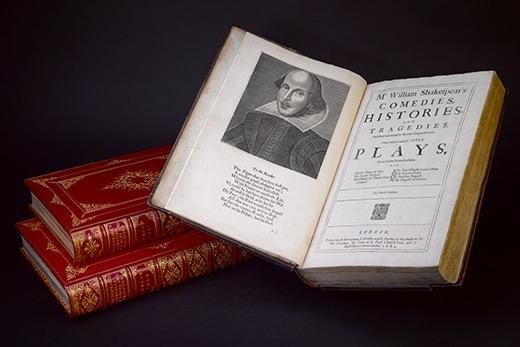
Weekdays: Free after 5pm | Weekends: Free
This rare opportunity to view all but the earliest version of the Folio is made possible by the loan of the Second and Third Folios from Rose Library benefactor Stuart A. Rose.
Related Programming
There's Nobody Coming for Us but Us
The exhibit features a mix of fourteen black-and-white and color prints by Camille Billops, an accomplished artist and distinguished professor. 'Billops creates unique work that is both enchanting and hard-hitting. Her avant-garde art invites the viewer to engage topics such as race, gender, her own experiences, her likes and dislikes, her struggles and her accomplishments, explains the curator, Clinton Fluker. Camille Billops and James Hatch have collected and documented African American culture and artistic history for more than 40 years. The couple placed their archives at MARBL in 2002, and the collection is available for research use.

The exhibit features a mix of fourteen black-and-white and color prints by Camille Billops, an accomplished artist and distinguished professor. “Billops creates unique work that is both enchanting and hard-hitting. Her avant-garde art invites the viewer to engage topics such as race, gender, her own experiences, her likes and dislikes, her struggles and her accomplishments,” explains the curator, Clinton Fluker. Camille Billops and James Hatch have collected and documented African American culture and artistic history for more than 40 years. The couple placed their archives at MARBL in 2002, and the collection is available for research use.
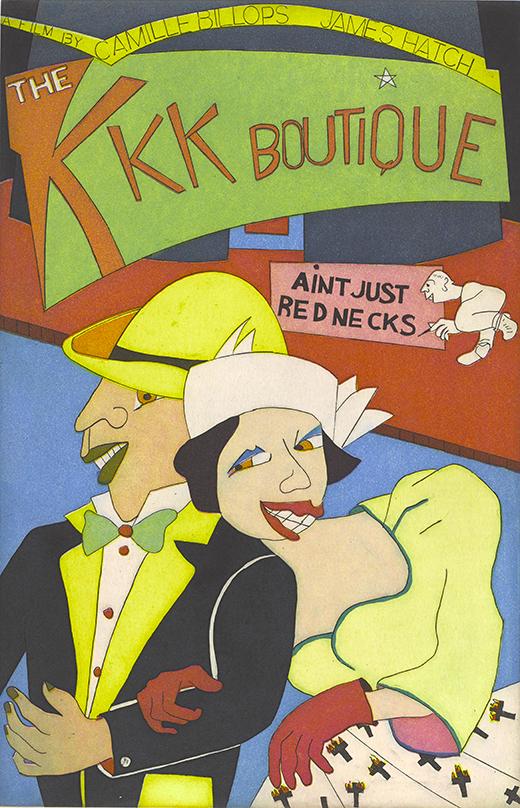
Weekdays: Free after 5pm | Weekends: Free
Stepping Out of Line
Our understanding of history comes from many sources, not the least of which are the records and manuscripts that document the events and personalities we consider historic. 'Stepping Out of Line' explores both documented and emerging histories from the LGBT collections and University Archives in the Stuart A. Rose Library.
This exhibit explores LGBTQ history through four lenses:
Queering Emory: in response to heteronormativity on campus
Acting up in response to the HIV/AIDS crisis
Allying together in response to chronic disadvantage and discrimination
Voicing their stories in response to marginalization of trans and GNC communities
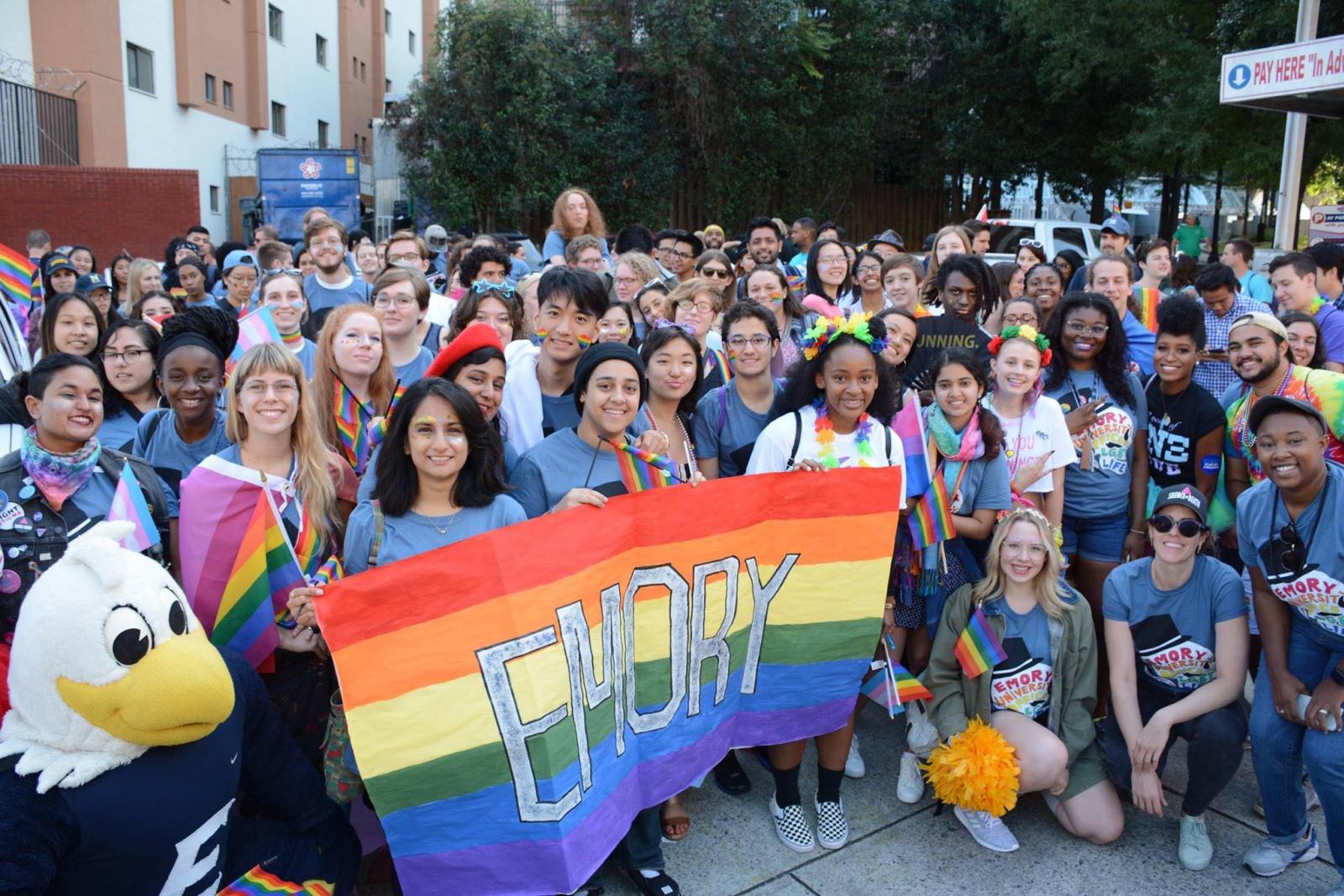
Our understanding of history comes from many sources, not the least of which are the records and manuscripts that document the events and personalities we consider historic. “Stepping Out of Line” explores both documented and emerging histories from the LGBT collections and University Archives in the Stuart A. Rose Library.
This exhibit explores LGBTQ history through four lenses:
-
“Queering Emory: in response to heteronormativity on campus
-
“Acting up” in response to the HIV/AIDS crisis
-
“Allying together” in response to chronic disadvantage and discrimination
-
“Voicing their stories” in response to marginalization of trans and GNC communities

Weekdays: Free after 5pm | Weekends: Free
She Gathers Me
Often our engagement with contemporary Black writers is through published works like novels, essays, and speeches, yet an exploration into their letters, journals, calendars, and photographs reveals surprising and interesting intersections between these writers. Due to ways in which Black women have been marginalized in publishing it is necessary to use archives to map the deep writing networks among these women writers.
"She Gathers Me" examines the connections found within intimate correspondences, personal projects, and speaking engagements and furthers our understanding of the interconnectedness of Black women writers beyond their published works. Through archival collections, we are granted insight into how these writers supported, challenged, and associated with one another.
This exhibition explores the networks created among Black women writers through four lenses:
Collective
SisterWriters
Dialogue
Remembrance
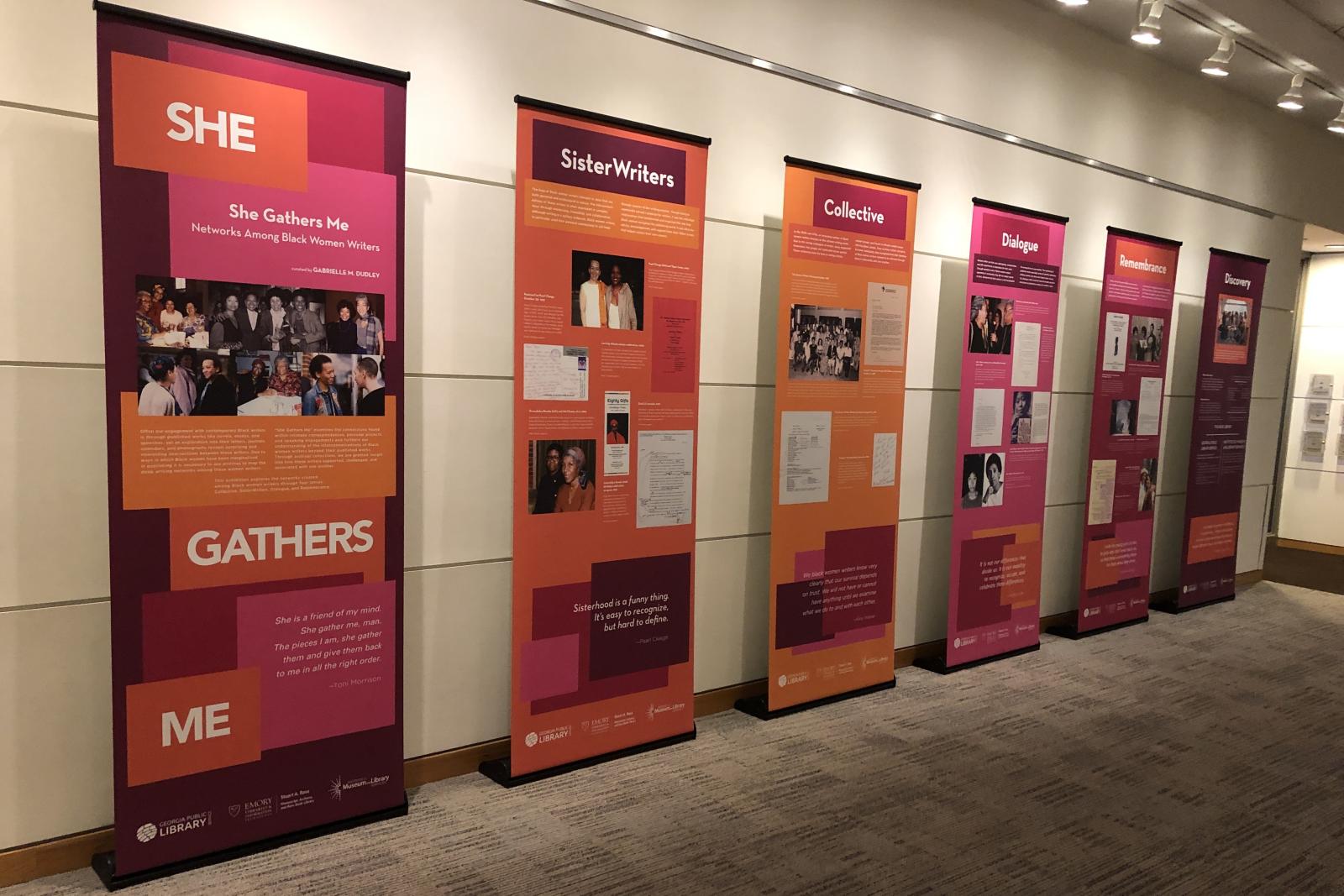
Often our engagement with contemporary Black writers is through published works like novels, essays, and speeches, yet an exploration into their letters, journals, calendars, and photographs reveals surprising and interesting intersections between these writers. Due to ways in which Black women have been marginalized in publishing it is necessary to use archives to map the deep writing networks among these women writers.
"She Gathers Me" examines the connections found within intimate correspondences, personal projects, and speaking engagements and furthers our understanding of the interconnectedness of Black women writers beyond their published works. Through archival collections, we are granted insight into how these writers supported, challenged, and associated with one another.
This exhibition explores the networks created among Black women writers through four lenses:
- Collective
- SisterWriters
- Dialogue
- Remembrance
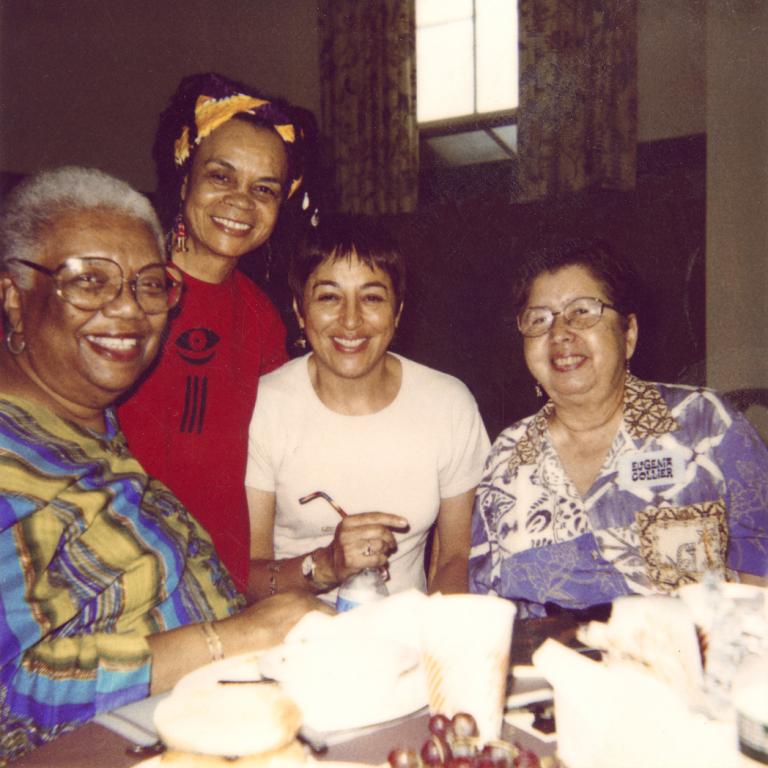
Weekdays: Free after 5pm | Weekends: Free
Resisting Racism
Students in Donna Troka's class "Resisting Racism: From Black is Beautiful to Black Lives Matter" created this exhibit based on archival research in the Stuart A. Rose Manuscript, Archives, and Rare Book Library.
The American Studies class of 19 students represents a variety of disciplines, including business, sociology, history and women¿s studies. The students formed six groups to work on topics such as policing, education, protest tactics, white supremacy/white privilege, gender/sex and respectability politics, and health. Their work resulted in this exhibit, with the students selecting the displayed materials with assistance from Gabrielle Dudley, Rose Library instruction archivist and QEP librarian.
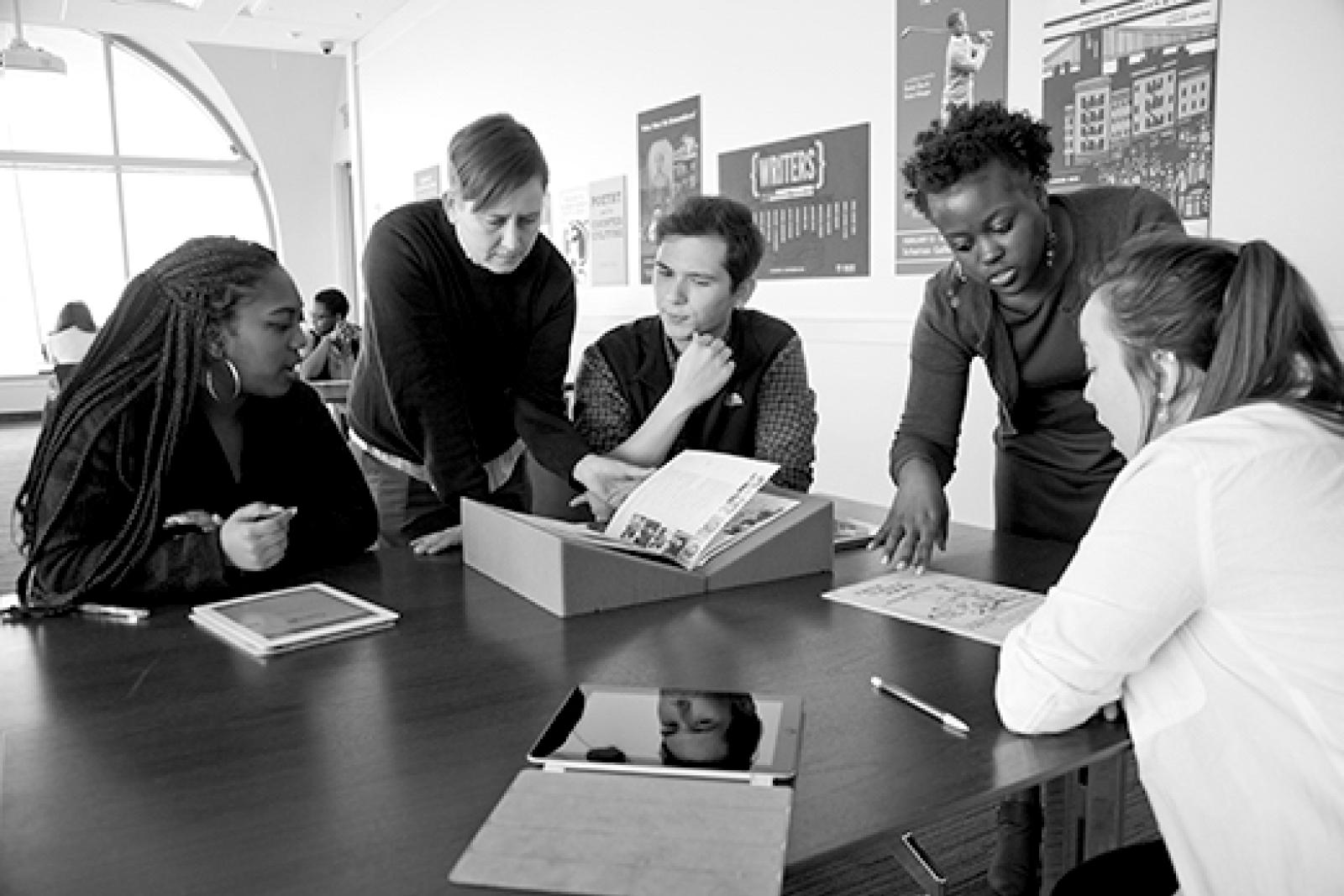
Students in Donna Troka's class "Resisting Racism: From Black is Beautiful to Black Lives Matter" created this exhibit based on archival research in the Stuart A. Rose Manuscript, Archives, and Rare Book Library.
The American Studies class of 19 students represents a variety of disciplines, including business, sociology, history and women’s studies. The students formed six groups to work on topics such as policing, education, protest tactics, white supremacy/white privilege, gender/sex and respectability politics, and health. Their work resulted in this exhibit, with the students selecting the displayed materials with assistance from Gabrielle Dudley, Rose Library instruction archivist and QEP librarian.
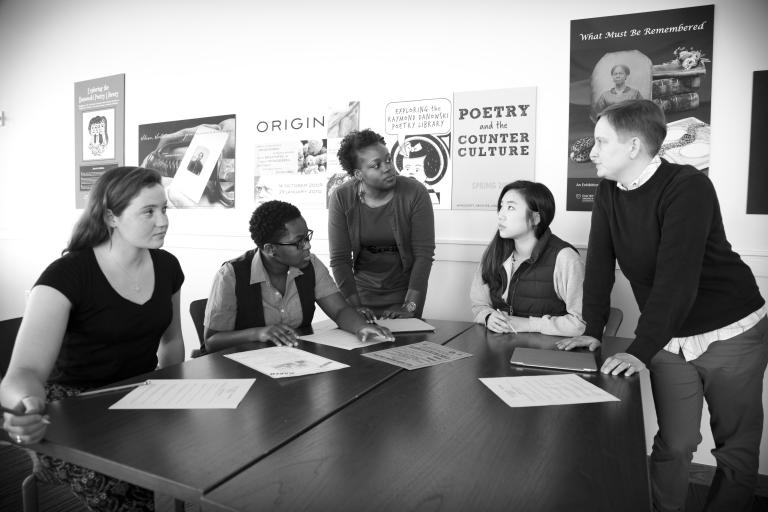
Weekdays: Free after 5pm | Weekends: Free
Explore Further
Reading Room with a View
The Reading Room of Rose Library offers visitors the opportunity to view first-hand the rich collections held by the Stuart A. Rose Manuscript, Archives, and Rare Book Library of Emory University. It also offers, through a large collage of posters and photographs, a chance to explore how the Library has engaged with diverse communities through our exhibitions.

"I’ve heard libraries described as the wardrobes of literature. This wonderful collage reflects the many Narnias we have explored over the last 20 years in the Rose library. Through these collections and exhibitions, as C.S. Lewis suggested, we 'open a door and enter a world.'” ⏤ Geraldine Higgins, Associate Professor
The Reading Room of Rose Library offers visitors the opportunity to view first-hand the rich collections held by the Stuart A. Rose Manuscript, Archives, and Rare Book Library of Emory University. It also offers, through a large collage of posters and photographs, a chance to explore how the Library has engaged with diverse communities through our exhibitions.
The images on this wall represent the breadth of our collections; the depth of our student, staff and faculty curators; and the range of our venues on Emory’s campus and beyond over more than 20 years of selected exhibitions.
View the "Reading Room with a View" online exhibit!
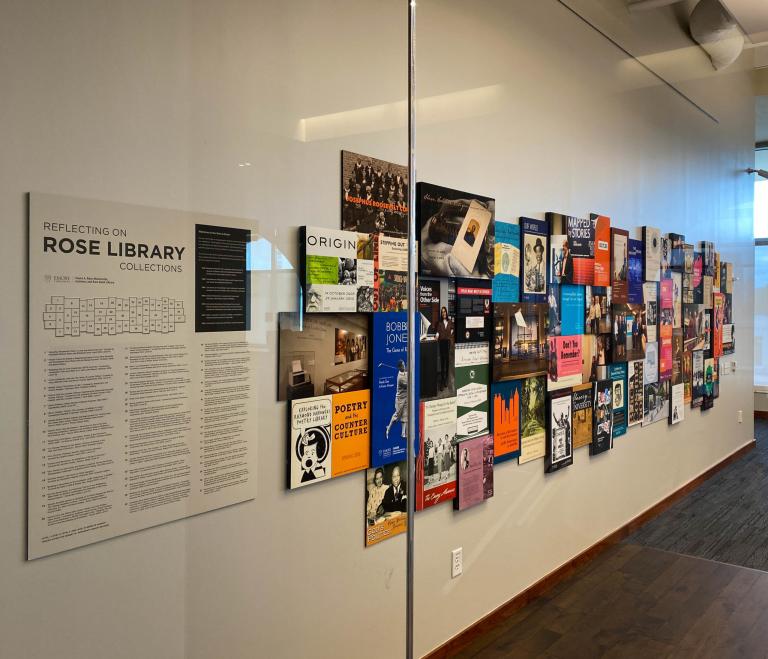
Common Thread
Some experiences in women's lives are universal: society's constrictions on women's bodies, stereotypes about work roles, and historical expectations about behavior, and what constitutes good and bad in each situation. These expectations are the result of dictates of the dominant culture that have suppressed and constrained women's thoughts, choices, and time. Women have not been silent against these strictures. In this exhibit, we examine how women book artists have subverted societies' precepts and processed them in deep, painful and humorous ways.
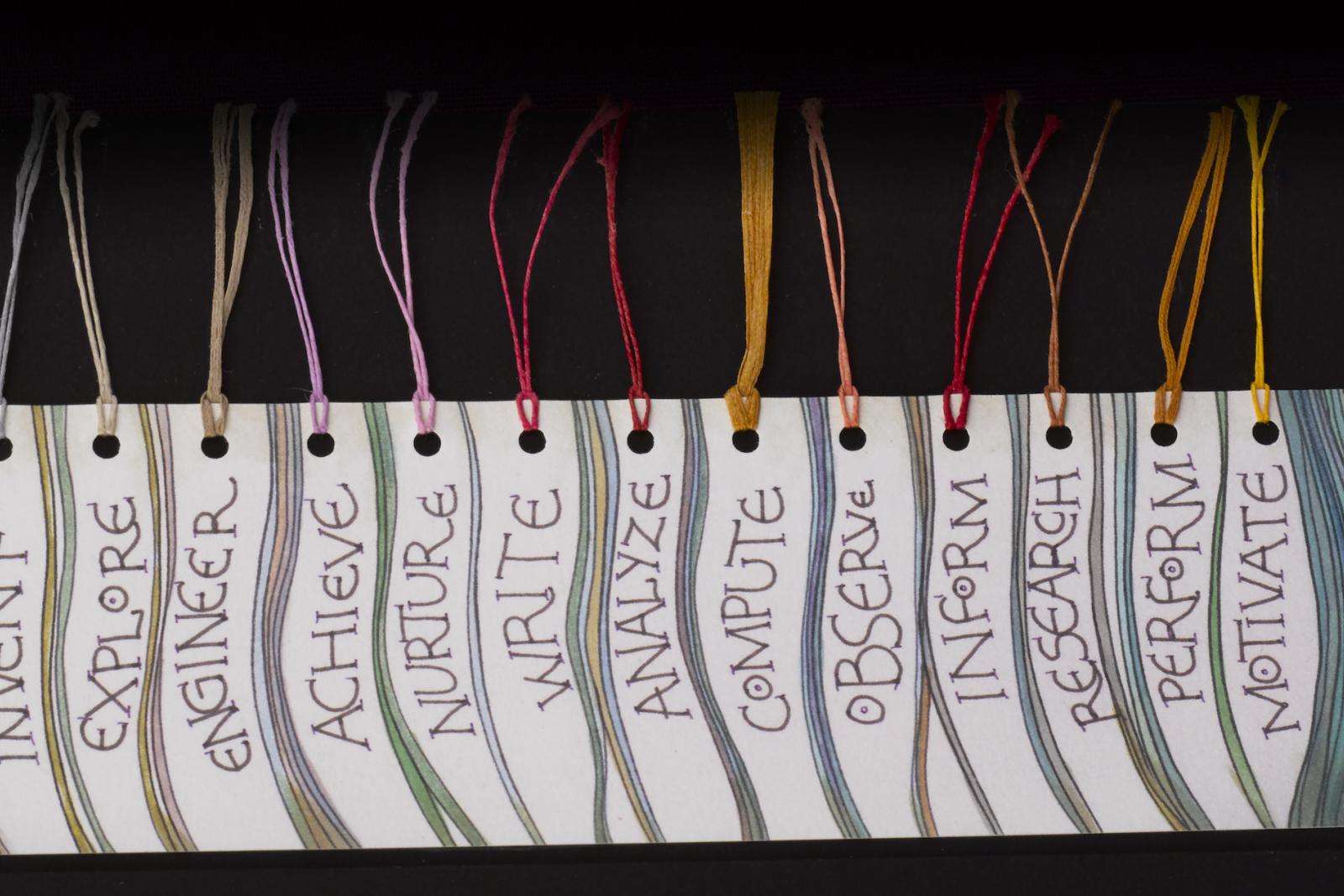
"We will display artists’ books that participants can examine up close, whose work also inspired our speakers in their own creative process.” — Beth Shoemaker, Rose Library’s rare book cataloger
Some experiences in women’s lives are universal: society’s constrictions on women’s bodies, stereotypes about work roles, and historical expectations about behavior, and what constitutes good and bad in each situation. These expectations are the result of dictates of the dominant culture that have suppressed and constrained women’s thoughts, choices, and time. Women have not been silent against these strictures. In this exhibit, we examine how women book artists have subverted societies’ precepts and processed them in deep, painful and humorous ways.
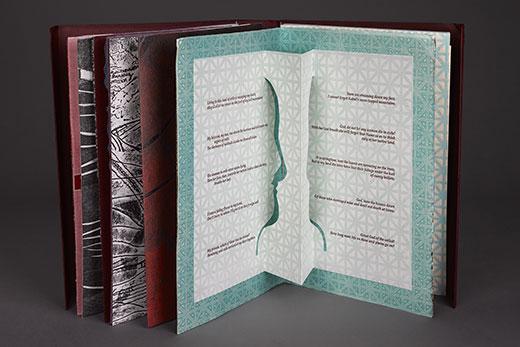
Weekdays: Free after 5pm | Weekends: Free

